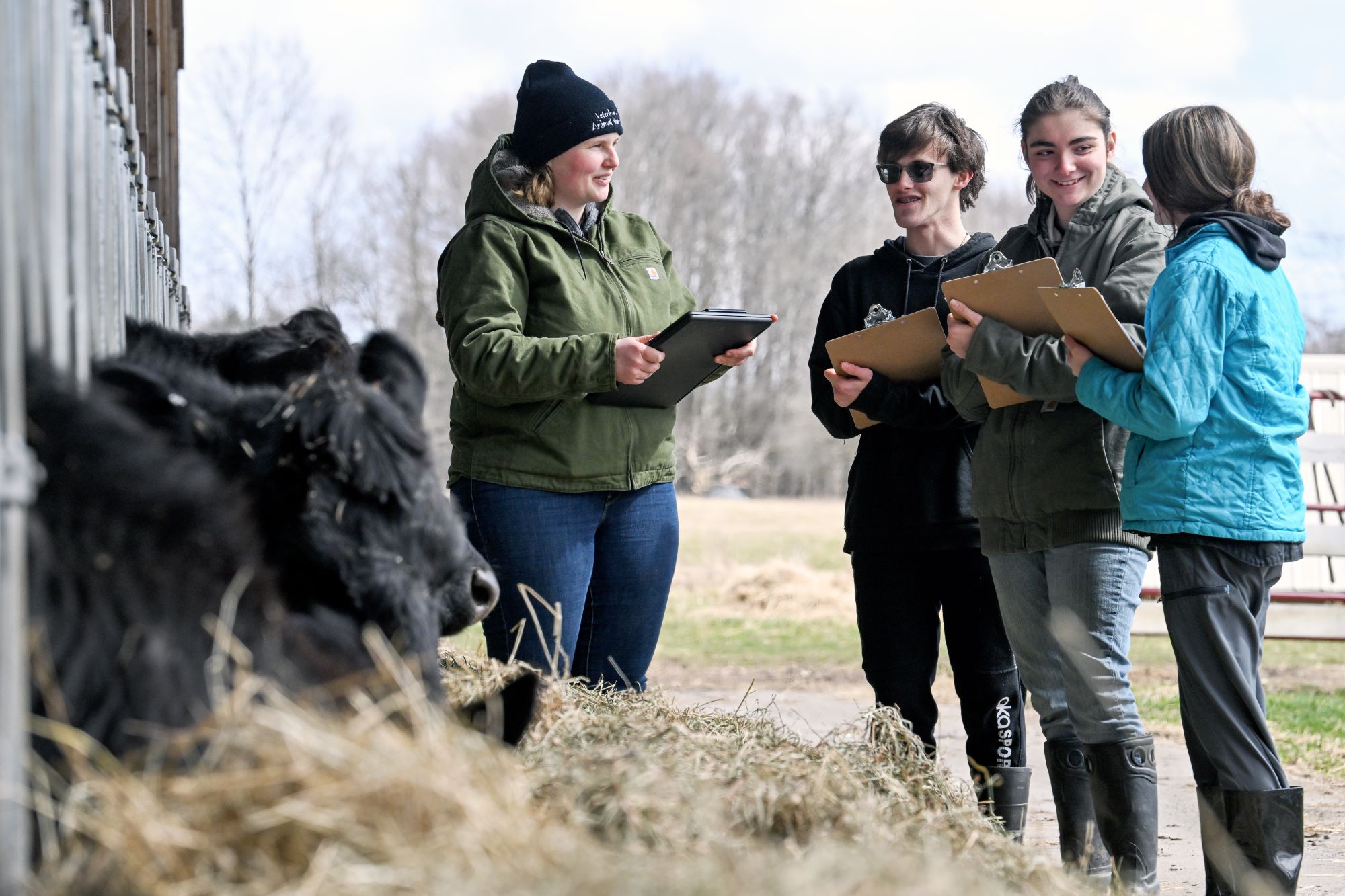Veterinary and Animal Science
 Students in this two-year program prepare for a future in the expanding animal industry, which offers a variety of career opportunities. This science-based program teaches skills in areas such as animal handling, anatomy and physiology, grooming, first aid, health and disease, clinical practices, veterinary terminology, and safety and sanitation.
Students in this two-year program prepare for a future in the expanding animal industry, which offers a variety of career opportunities. This science-based program teaches skills in areas such as animal handling, anatomy and physiology, grooming, first aid, health and disease, clinical practices, veterinary terminology, and safety and sanitation.
Students have the opportunity to work with small
animals in the classroom and large animals through partnerships with local agribusinesses. They will learn basic care and handling with a range of species including cows, horses, sheep, goats, rats, rabbits, guinea pigs, hamsters, dogs, and cats. Students will use the tools of the trade, including diagnostic and grooming equipment. Internships with local veterinary clinics, animal shelters, farms, grooming and training facilities are also part of the experience.
Students have the opportunity to earn one high school science credit (Comparative Animal Anatomy & Physiology), one high school English credit, and can also earn college credits over the course of the program.
Student Learning Outcomes
- Students will be able to compare/contrast the characteristics of common domestic animals.
- Students will be able to safely handle companion animals.
- Students will be able to utilize medical terminology to effectively communicate with veterinary and animal science industry professionals.
- Students will develop the skills needed to properly communicate with customers and clients.
- Students will be able to identify how diseases can be transmitted and demonstrate effective techniques for prevention.
- Students will be prepared for college level animal anatomy and physiology coursework.
Elements of Course Content:
- Safety, Handling, and Animal Behavior
- Animal Rights & Welfare
- Pet First Aid
- Animal Anatomy & Physiology
- Small Animal and Exotic Animal Care
- Basic Grooming Procedures
- Microscope Use and Parasite Identification
- Clinical Skills and Medical Terminology
- Internships
- Career Exploration
High School Academic Credit Available:
Students have the opportunity to earn one high school Science credit (Anatomy & Physiology) and may also have the opportunity to earn college credits over the course of the program.


